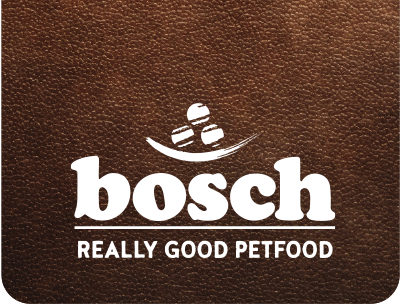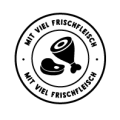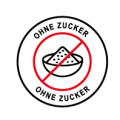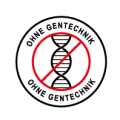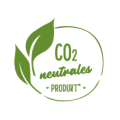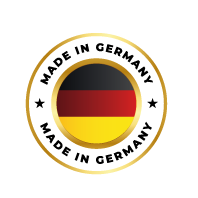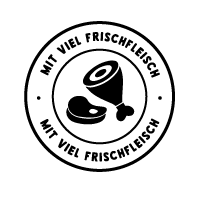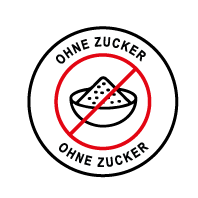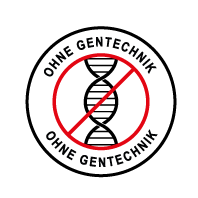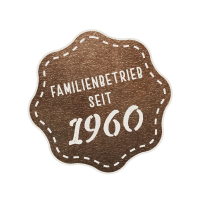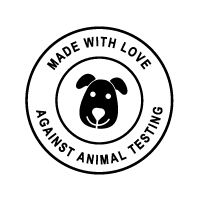

The analytical constituents of a feed include the content of crude protein, crude fat, crude ash and crude fiber. The information is used to divide the components of a feed into different nutrient groups.
We would like to explain the analytical constituents of a feed for you.
What is meant by the term “crude fiber”?
The crude fiber is predominantly fibrous plant components, which are often referred to as “fiber” in human nutrition. Although the relatively difficult to digest plant components are excreted almost unchanged, they fulfill very important regulatory functions in your four-legged friend's diet.
The crude fiber content in the feed indicates the amount of soluble and insoluble fiber. Soluble fibers serve primarily as prebiotics. They feed important and desirable bacteria in the intestines of dogs and cats and thus support the stability of the intestinal flora. Insoluble fiber is necessary for the natural functioning of the intestines. The intestines are filled and their movement is stimulated. This prevents constipation and constipation.
A food with an increased crude fiber content ensures a longer-lasting feeling of satiety and is therefore particularly suitable for dogs and cats that tend to be overweight. The fiber components fill the stomach, while at the same time the energy content of the food is reduced - the classic light principle. The best-known sources of fiber are some grain products, vegetables, dried beet pulp, pea fiber, etc.
Crude fiber is therefore not a “filler”, but a combination of high-quality, useful and specially selected raw materials.
What is meant by the term “crude ash”?
If you heated dog food to several hundred degrees, all of the organic components would burn. All remaining non-combustible materials would remain as ash. The term raw ash includes all of these inorganic substances - i.e. minerals and trace elements - that are contained in the feed.
Nutritionally, minerals are divided into bulk elements such as calcium, phosphorus, magnesium, sodium, potassium and chlorine as well as trace elements such as iron, copper, zinc, manganese, cobalt, selenium and iodine etc. The minerals have numerous functions, such as the development of the skeleton via the nerves and muscle functions, water balance and blood structure. Minerals are involved in all important body functions.
When it comes to minerals, both a deficiency and an oversupply can have serious consequences for our four-legged friends. So it’s not “the more the better”. Therefore, a practical tip: The supplementary feeding of mineral mixtures should always be precisely calculated and coordinated with the veterinarian. If a complete food is fed, adding additional minerals is not necessary and can have very serious consequences such as bone deformities or symptoms of poisoning.
What is meant by the term “fat content”?
The term fat content includes animal and vegetable fats and oils. Fat provides our furry friends and cats with the energy they need for every adventure.
Individual fat building blocks, the so-called essential fatty acids, have important functions in the development of skin and hair. They also fulfill various roles in cell metabolism and support the body's own defenses. Omega-6 fatty acids and omega-3 fatty acids are particularly important in this context. These essential fatty acids are very sensitive, which is why we take special care to protect them when producing our food.
What is meant by the term “protein”?
The term protein includes all animal and vegetable proteins. Protein is present in every cell of the body of dogs and cats and plays an important role in all life processes. It consists of individual building blocks called amino acids. They are the building blocks for the development of muscles, but also enzymes. It is always crucial that the right amino acids are present in the right quantities.
When calculating our recipes, we check not only the quantity but also the composition of the proteins used to ensure optimal nutrition for the animal. The more precisely the amino acid composition of the feed protein corresponds to the needs of the dog or cat, the better the feed protein can be utilized. However, the better the feed protein can be utilized, the lower the protein content required.
An oversupply of protein or amino acids puts a strain on the metabolism and on the liver and kidneys. Therefore, needs-based supply is crucial and not the principle “the more, the better”.
Do you have any further questions about the analytical components of our feed?
Feel free to contact our nutrition experts. They will be happy to help you by e-mail and by telephone via our free hotline.
Phone: +49 (0) 800 333 8 222 (free of charge)
E-Mail: expertenteam@bosch-tiernahrung.de
Monday - Thursday: 7.30 - 12 o'clock & 13 - 16 o'clock
Friday: 7.30 - 12 o'clock & 13 - 15 o'clock
